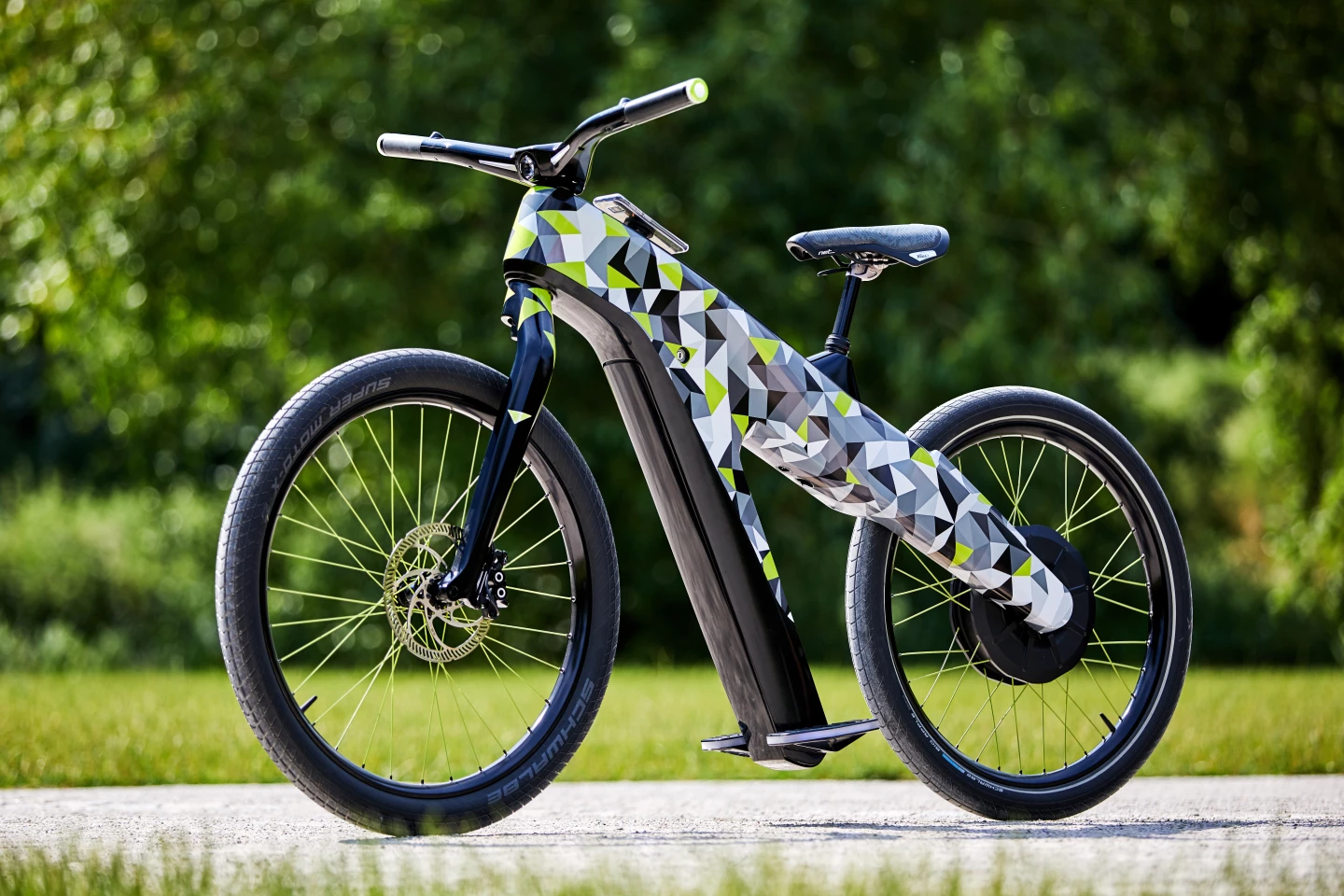Skoda is looking beyond current legal restrictions that are limiting the capabilities of today's e-bikes, looking toward a future where the moped, scooter and e-bike categories start to blend together into a new class of electric transport we don't really have a name for yet. At Eurobike this weekend, the Czech auto company will be displaying its Klement concept, a weird, pedal-free e-bike with a novel control system.
Conceived as an urban getabout, the Klement is a chunky-looking electric bike with neat-looking single-sided suspension arms at either end. There's no suspension, though – it's a rigid frame that relies on its medium-fat Schwalbe Super Moto-X tires for bump absorption.
The rear wheel is driven by a chunky 4-kW (5.4-hp) hub motor, which should make it take off like a rocket on the way to its top speed of 45 km/h (28 mph). Two removable lithium-ion batteries give it a combined 1.25 kWh of energy storage, and the Klement's relatively light target weight of 25 kg (55 lb) allows it a range of up to 62 km (38 mi).

The interesting bit, of course, is the control scheme. There are no pedals here, just a pair of tilting footrests. Tilt them forward, and the bike accelerates. Tilt them backwards, and regenerative braking kicks in. Tilt them completely back, and the pedals even begin engaging the hydraulic disc brake on the front wheel – which is equipped with ABS to make up for the fact that you won't have much feeling for the brakes through your heels.
Without any levers or throttles, the handlebars are quite a sparse affair, with neat little buttons for the lights, horn and indicators. If you want a speedo or battery readout, you need to attach your phone to the frame.

It's a neat looking concept, and a remarkably weird control system. But let's be honest, it's innovation for its own sake, and it probably won't be as controllable or nice to use as a simple twist throttle and brake levers. Those tilting footrests won't offer a lot of feel, they'll be hard to control when you're standing up, and ... well, there's really no good reason for them to exist.
On the other hand, if concepts like this look different enough from full-fat motorcycles to regulatory bodies around the world, perhaps they'll help break through the morass of current e-bike laws that are stifling next-gen clean commuting machines. There's a place in the transport mix for electric machines around this kind of power level and range, maybe even as high as 10 kW (13 hp) and speeds up to 60 km/h (37 mph), with the potential for low-barrier licensing and low-cost registration to encourage people to get out of their cars and onto low-carbon-footprint, super practical electric options.
Source: Skoda








